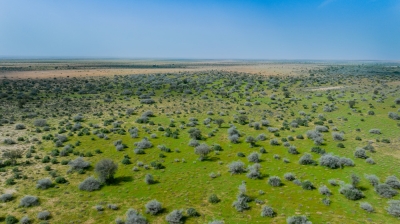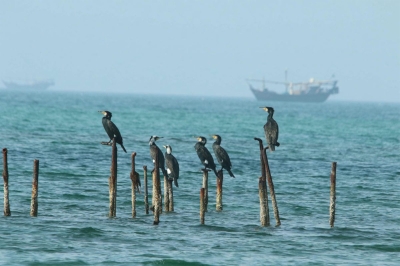
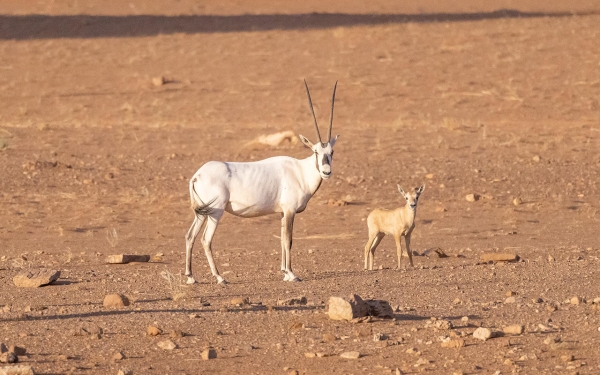
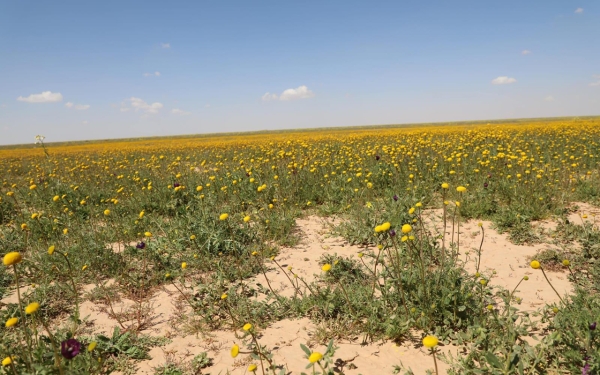
The King Salman Bin Abdulaziz Royal Natural Reserve is the largest royal Reserve in the Kingdom of Saudi Arabia. It is located to the north along the Jordanian-Saudi border and is the fourth-largest land reserve in the world and the largest in the Middle East.
The reserve extends between four administrative provinces: al-Jawf, Hail, Tabuk, and the Northern Borders. It includes UNESCO-registered monuments in Jubbah city, which date back more than eight centuries BCE.
Establishment of King Salman Bin Abdulaziz Royal Natural Reserve
The King Salman Bin Abdulaziz Royal Natural Reserve was established pursuant to a Royal Order in June 2018 that stipulated that the protected areas of al-Khunfah, at-Tubayq, and Harrat al-Harrah, as well as areas between them and adjacent areas, be consolidated under a royal reserve called King Salman Bin Abdulaziz Royal Natural Reserve. Its board of directors is chaired by His Royal Highness Prince Abdulaziz Bin Saud Bin Nayef Bin Abdulaziz Al Saud, with the membership of six specialist experts nominated by the Council of Royal Reserves.

Location of King Salman Bin Abdulaziz Royal Natural Reserve
Three former reserves fall within the area of the King Salman Bin Abdulaziz Royal Natural Reserve, namely al-Khunfah, at-Tubayq, and Harrat al-Harrah, with a total area of 130,700 km. The reserve is characterized by its pristine nature, fresh air, geographical and heritage diversity, rare monuments, and remarkable geographical diversity, as it includes fourteen geographical formations of mountains, plains, and plateaus, among others, as well as deposits of six valuable minerals.
The reserve’s borders overlap with several governorates and villages, most notably: al-Qurayyat Governorate and Tubarjal from al-Jawf Province, and Turaif from the Northern Borders Province. From the west, the reserve is bordered by Tabuk Province; from the southwest by Tayma; from the southeast by Hail; from the east by Sakaka and Dumat al-Jandal; and from the north by the Jordanian border near Wadi Rum.
The Harrat al-Harrah protected area, one of the three components of the King Salman Bin Abdulaziz Royal Natural Reserve, is located northwest of the Kingdom on the borders of the Hashemite Kingdom of Jordan and extends east of Wadi Sirhan. It spans an area of 13,775 km. The reserve's surface consists of a volcanic plateau with black basaltic rocks, in addition to a range of low-lying volcanic mountains rising between 800 m and 1,150 m above sea level. The reserve is distinct for its varied vegetation, consisting of perennial plants and annuals, that are predominantly abundant in valley floors and on valley sides. Some of most important animals within the reserve are the reem gazelle (Gazella marica), Arabian wolf (Canis lupus arabs), red fox (Vulpes vulpes), Rüppell's fox (Vulpes rueppellii), striped hyena (Hyaena hyaena), cape hare (Lepus capensis), and jerboa (Dipodidae).
With regards to at-Tubayq Reserve located northwest of the Kingdom on the Jordanian border, it spans an area of 12,105 km. It is characterized by rugged terrain, with the Tubayq Mountains located on the western and central sides of the reserve, as well as valleys and canyons. Sand and limestone sedimentary rocks abound on the surface, with some sandy areas on the eastern side of the reserve. The reserve is described as poor in vegetation, and the Nubian Ibex (Capra nubiana) is one of the most important animals in the reserve.
The third component of the King Salman Bin Abdulaziz Royal Natural Reserve is al-Khunfah Reserve, located in the north of the Kingdom on the western edge of the Great Naufd Desert, north of the city of Tayma, over an area of 19,339 km. Its terrain is overwhelmingly comprised of sandstone, along with mountains, hills, plateaus, canyons, valleys, and sands. The main tree species in the reserve are acacias (Vachellia seya), phogs (Calligonum polygonoides), white saxauls (Haloxylon persicum), and tamarisks (Tamarix). The main animal species are the reem gazelle, with small numbers of Arabian gazelle (Gazella arabica).
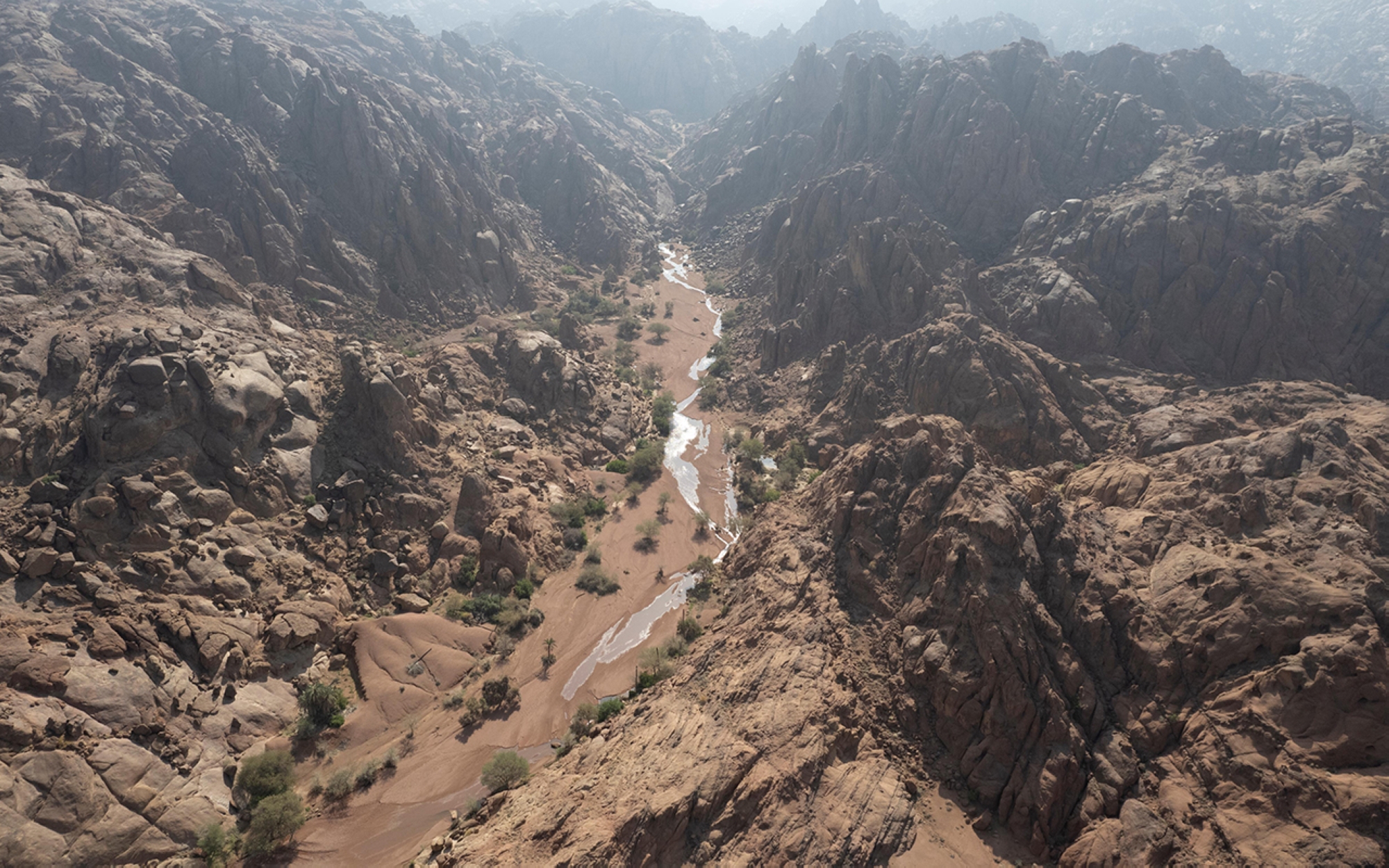
Features of King Salman Bin Abdulaziz Royal Natural Reserve
The reserve is characterized by great animal diversity, comprising more than 282 fauna species, ranging from mammals, birds, reptiles, and amphibians. The most prominent animals found in the reserve are the reem gazelle, Arabian wolf, Arabian fox, Nubian ibex, cape hare, houbara bustard (Chlamydotis undulata), golden eagle (Aquila chrysaetos), curlew (Numenius), red fox, grey wolf (Canis lupus), sand cat (Felis margarita), desert hedgehog (Paraechinus aethiopicus), Egyptian fruit bat (Rousettus aegyptiacus), and the saker falcon (Falco cherrug).
With respect to vegetation, plants at the King Salman Royal Reserve play a key role in recycling nutrients and maintaining the environmental balance of the habitat. The reserve contains more than 450 varieties of different plant species, most notably: acacias, Arabian boxthorn (Lycium shawii), saxaul (Haloxylon ammodendro), retem (Retama raetam), Calligonum, Mediterranean saltwort (Caroxylon vermiculatum), saxaul (Haloxylon), common mugwort (Artemisia monosperma), yarrow (Achillea millefolium), and mugwort (Artemisia).
Along with its wealth of fauna and flora, the reserve is steeped in history, going back millennia. Traces of ancient human civilizations have been found at the reserve in a chronology of up to twelve thousand, dating back to ancient periods as the ages of the peoples of A’ad, Thamud, and Madyan, through the pre-Islamic periods, the Islamic age, and all the way to modern times. Archaeological relics of these civilizations were found in more than four hundred archaeological sites, most notably in Jubbah, Kalwa, and Kaf Palace. It is also an attractive tourist site in its own right, with over fourteen diverse geographical formations, including volcanic craters, sand dunes, canyons, mountains, and towering highlands.
Focus on biodiversity in King Salman Bin Abdulaziz Royal Natural Reserve
As part of the attention devoted to biodiversity at the reserve, the King Salman Bin Abdulaziz Royal Reserve Development Authority released sixty-five reem gazelles in al-Khunfah Reserve in 2022, to achieve cooperation and integration in the nurturing of wildlife and biodiversity, and to restore ecological balance at the reserve. This was preceded by the release of one hundred reem gazelles in 2021.
With regard to vegetation, the King Salman Bin Abdulaziz Royal Reserve Development Authority initiated a project to cultivate 500 thousand tree saplings on the reserve’s land in 2022, by planting 400 thousand saplings in Jubbah, and 100 thousand in at-Tubayq Reserve. Irrigation and horticulture works are scheduled to continue until 2024.
Related quizzes
Related articles
